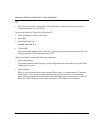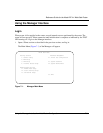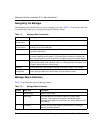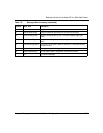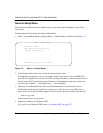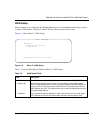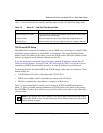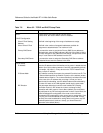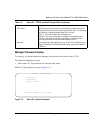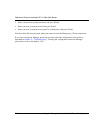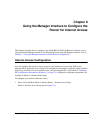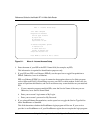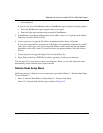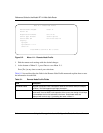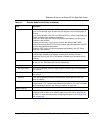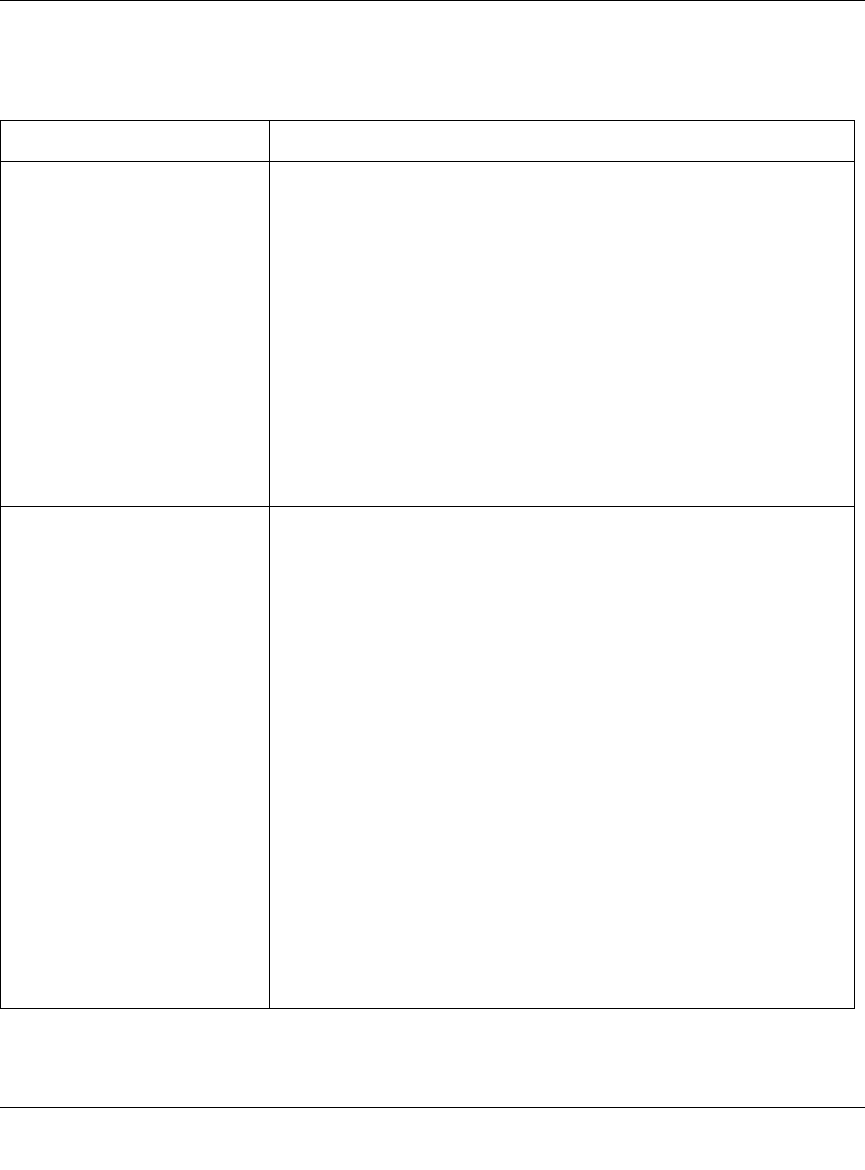
Reference Guide for the Model RP114 Web Safe Router
7-10 Using the Manager Interface for Initial Router Configuration
.
Table 7-5. Menu 3.2 - TCP/IP and DHCP Setup Fields
Field Description
DHCP: If set to Server, the router acts as a DHCP server.
If set to None, the router’s DHCP server is disabled.
DHCP Configuration:
Client IP Pool Starting
Address
This field is the beginning of the range of addresses to assign.
Size of Client IP Pool This field is the number of sequential addresses available for
assignment to attached hosts. The maximum is 32.
Primary DNS Server If you want the router to provide the Primary DNS Server address to
attached hosts, enter the DNS address in this field. If this field is 0.0.0.0,
the router assigns its own address as DNS Server, and performs a DNS
Proxy if it can obtain a DNS address from the ISP.
Secondary DNS Server If you want the router to assign the Secondary DNS Server address
to attached hosts, enter the address in this field.
TCP/IP Setup:
IP Address Enter the IP address of the LAN interface of the router in dotted-decimal
notation (four 8-bit numbers, between 0 and 255, separated by periods,
for example, 192.168.0.1). Every device on the TCP/IP network must
have a unique IP address.
IP Subnet Mask An IP address consists of two parts, the network ID and the host ID. The
IP Subnet Mask specifies the network ID portion of the address, written
in dotted-decimal notation. The router automatically calculates this mask
for the class of the IP address that you assign. Unless you have a
special need for subnetting, use the default subnet mask calculated by
the router. All hosts on the LAN segment should use the same mask.
RIP Direction This parameter determines how the router handles RIP (Routing
Information Protocol). RIP allows the router to exchange routing
information with other routers. If set to None (default), the router does
not participate in any RIP exchange with other routers. If set to Both, the
router broadcasts the routing table of the router on the LAN and
incorporates RIP broadcasts by other routers into its routing table. If set
to In Only, the router broadcasts its routing table on the LAN. If set to
Out Only, the router broadcasts its routing table, but it ignores any RIP
broadcast packets that it receives. Usually, you should leave this
parameter at the default (None)
.



